- Crude oil, reportedly from a public sector refining company, has leaked into the Kosasthalaiyar river to the north of Chennai, the biodiverse Ennore creek, and the Bay of Bengal, thereby polluting the ecosystem and rendering the waters unfit for fishing.
- As many as 2,301 fisher families have been affected, and 787 boats remain damaged. In the absence of fishing opportunities, fishing communities struggle for the basics and say that the compensation provided is insufficient.
- As the oil has also impacted the mangroves in the region — an essential breeding ground for fish and a crucial part of the marine ecosystem, ecologists raise concern.
On the evening of December 21, 2023, in the wintry chill, 38-year-old fisherman M Santhosh Kumar faced the Kosasthalaiyar river with a steady gaze. The river flows north of Chennai city, drains into the Bay of Bengal, and is the most important source of livelihood for Kumar. It now bears the scars of a large-scale oil spill mixed with floodwater in the aftermath of cyclone Michaung that battered Chennai, in early December.
Kumar and more than 2,000 fishermen from the nine fishing villages of Ennore (a neighbourhood in north Chennai), have not ventured into the Kosasthalaiyar river, the Ennore Creek, and the Bay of Bengal since the beginning of December, as the India Meteorological Department (IMD) issued a red alert ahead of Cyclone Michaung. Cyclone Michaung ravaged Chennai with unprecedented rainfall of 45 cm in 36 hours on December 3 and December 4, leaving the city inundated.
While the cyclone prevented fishermen from accessing the waters for one week, the oil spill that happened after the cyclone passed, has rendered the waters unfit for fishing, bringing the lives of fishermen in Ennore to a complete standstill.
On December 4, crude oil from the Chennai Petroleum Corporation Limited (CPCL), a public sector refining company, reportedly leaked into the Kosasthalaiyar river, Ennore Creek, and the sea. This was exacerbated by floods because it resulted in a quick spread of the oil, confirms an expert (on condition of anonymity) from the Indian Institute of Technology – Madras (IIT-M).
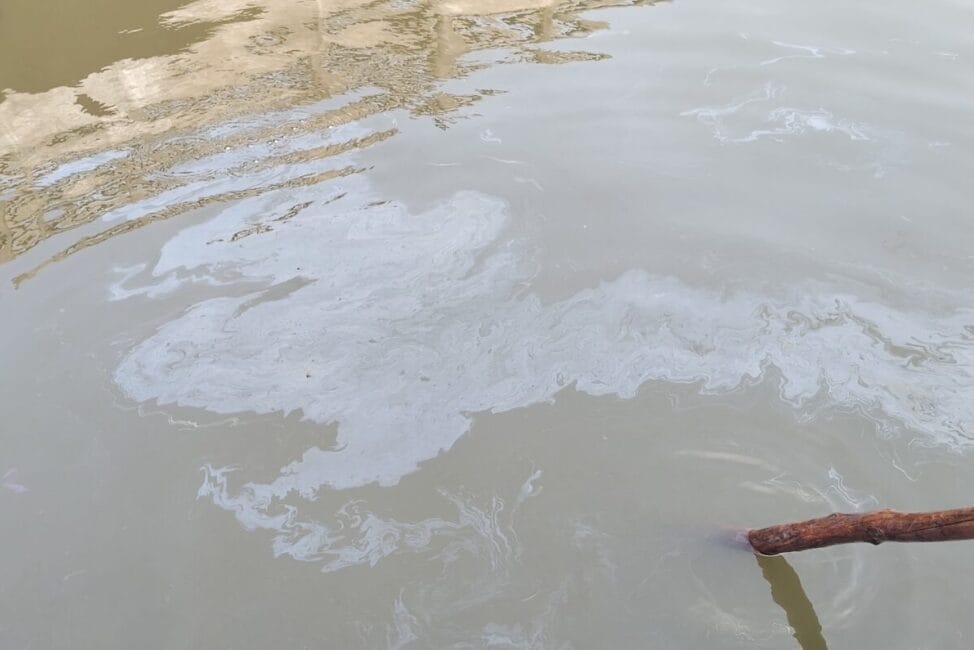
Media reports revealed that the oil spill spans 20 square kilometres, extending from the Kasimedu harbour to the Kosasthalaiyar river, adjoining Santhosh Kumar’s hamlet. When the Tamil Nadu Pollution Control Board’s (TNPCB) technical team ventured to find out the source of the oil spill they reported that, “there is some stagnant storm water along with oil, adjoining to the storm outlet near South Gate of Chennai Petroleum Corporation Limited, which is slowly contributing to oil traces.”
However, a senior official of CPCL counters this claim. At the clean-up site, the official, speaking on the condition of anonymity, tells Mongabay-India that the petroleum company should not be blamed for the oil spillage. “Oil used to clean the motors from the industrial estate of Chintadripet has contaminated the waters. But as our refinery is located closest to the affected region, we have been blamed. And so, we have been part of the clean-up activity,” the official shares.
According to a TNPCB official at the clean-up site, who also wishes to be anonymous, oil from CPCL mixed with the surplus flood water. “In addition to this, the state government had to discharge excess water from Puzhal and Poondi reservoirs, increasing the flooding situation and resulting in a quick spread of oil spill,” the official adds.
Read more: Chennai’s environmental issues put the spotlight on TNPCB
Ground reality
The Additional Chief Secretary of the Environment, Climate Change, and Forest Department, Supriya Sahu, issued a statement which mentions that the clean-up activity at Ennore was completed on December 20, 2023. The statement claimed that 105.82 kiloliters of oily water and 393.5 tonnes of oily sludge had been removed.
However, when this correspondent visited the affected regions of the Kosasthalaiyar river and Ennore Creek, an oil slick still blanketed the waters, the boats, and the pristine mangroves—a situation that is a source of concern for the fishermen. Oil has painted the boats black, ruined several fishing nets, and killed the fish, directly affecting the livelihoods of fishermen.
In the past week, Kumar has spent all his evenings on a rickety boat tethered along the shores of the Kosasthalaiyar river. “I go home after my children sleep and leave early in the morning before they wake up,” shares Kumar. “Every Christmas, I buy new clothes for my kids and ten other kids in the orphanage nearby. I did not know how to tell my children I could not afford them new clothes this year. So, I avoided meeting them,” he adds.
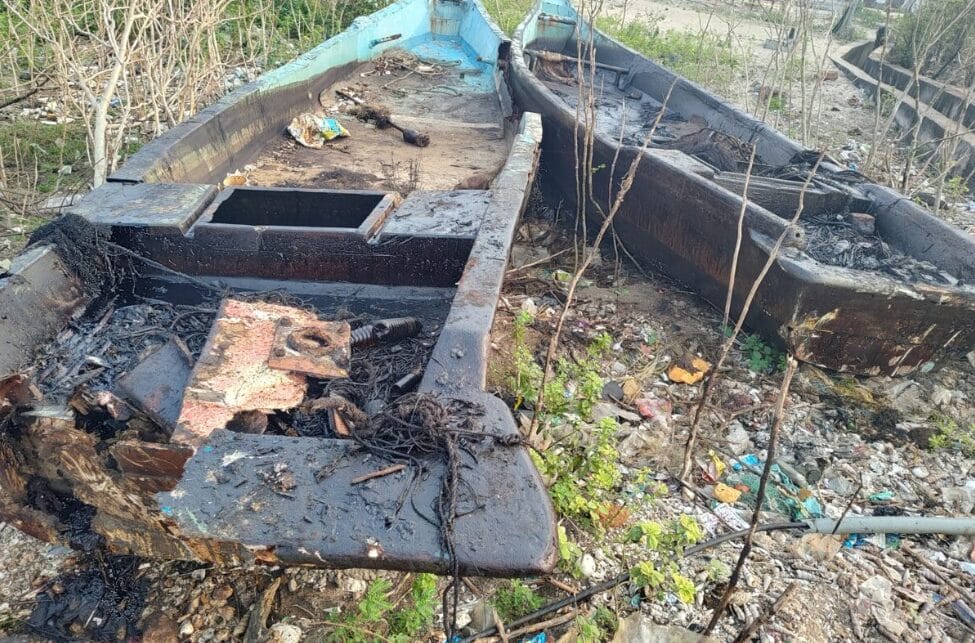
Having endured the dual impact of Cyclone Michaung and an oil spill, fishing families now confront an uncertain future. With the men facing irregular incomes, the burden of managing households has shifted to the shoulders of the fisherwomen. “A few days a week, my husband used to come home empty-handed after a long day of fishing. But that never distressed me, as I knew the catch would be good the next day or the day after,” shares K Srimathi (45), wife of a fisherman from Nettukuppam village.
For fishermen to now venture into the sea, their boats need repairs, the marine ecosystem must be restored, and, most importantly, the water should be clear of oil. As the timeline for any of these developments remains unclear, the women are growing anxious. “We are begging our neighbours for some onion and tamarind,” says 33-year-old N Ratna of Ennore Kuppam. She claims that her savings of Rs. 5,000 are now exhausted and she has pledged her gold chain to keep the cooking pot boiling at her home.
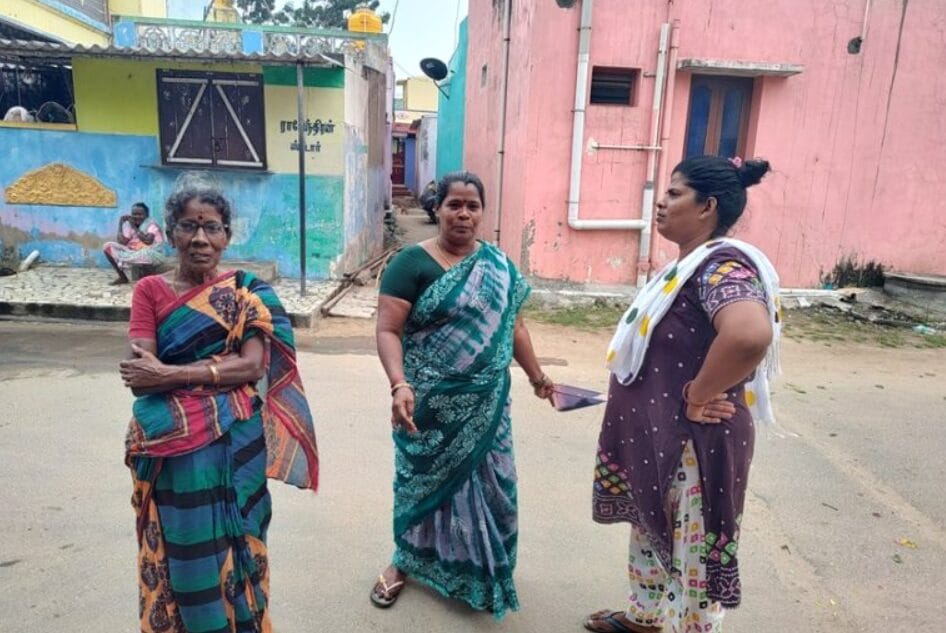
‘Compensation insufficient’
On December 23, 2023, Chief Minister MK Stalin declared compensation of Rs 8.68 crore for 9,001 affected families. Each family will receive Rs 12,500, with an additional Rs 10,000 allocated for the repair of 787 damaged boats. CPCL will bear Rs. 7.53 crore of the total Rs. 8.68 crore relief fund. However, fishermen state that their economic losses are many times higher than the announced compensation.
Elumalai R (38), a fisherman from Ennore, has been in the trade ever since he was twelve. “I spent Rs. 1.7 lakhs to buy a fiber boat four years ago. I purchased the fishing net for Rs. 50,000. How is a mere Rs. 10,000 enough for a damaged boat?” he questions.
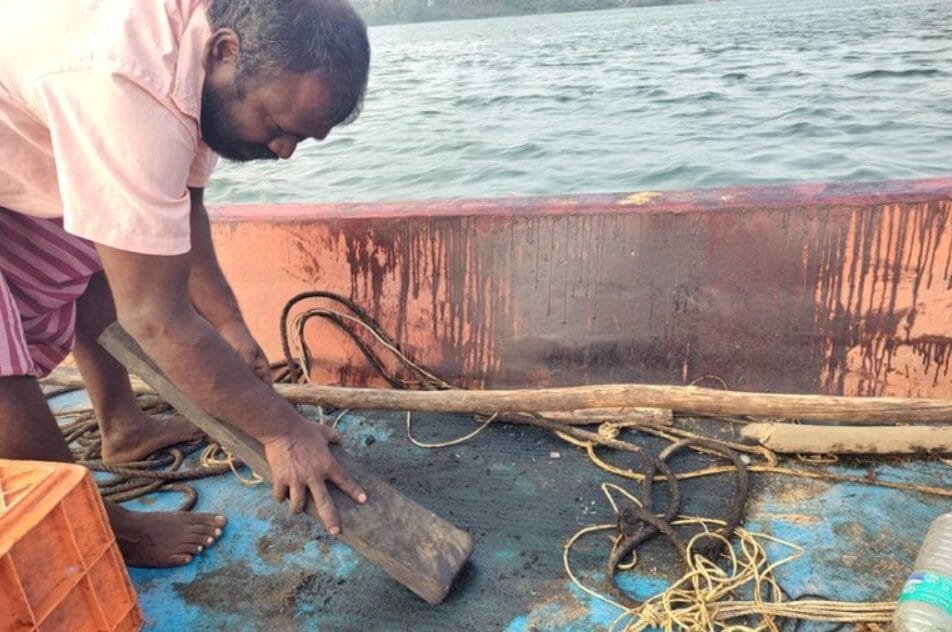
“This year brings back memories of the challenging times we faced after the 2004 Tsunami struck,” Elumalai reflects. In the aftermath of the Tsunami, fishermen refrained from venturing into the sea for over a month. “The local MLA provided each family with five kilos of rice. How is that enough for the enormity of losses we faced?” questions K Dinesh another fisher from Kumar’s hamlet.
Hazardous chemicals and ecological loss
Water samples from the contaminated regions of Kattukuppam and Nettukuppam in Ennore Creek were tested at Tamil Nadu Test House Private Limited by the media house Puthiya Thalaimurai. According to the report accessed by Mongabay-India, the tested water contained eight volatile organic compounds, including Benzene, Toluene, and Styrene, as well as sixteen Polycyclic Aromatic Hydrocarbons (PAHs) such as Naphthalene, Fluorene, and Anthracene.
“As per the Bureau of Indian Standards for drinking water, the total petroleum hydrocarbons should be 0.1 parts per billion. However, the tested water showed a significantly higher level of 3,240 parts per billion. Volatile Organic Compounds such as Benzene, Styrene, and Ethylbenzene, on the other hand, are 50 to 60 times higher than the standards,” Prabhakaran Veerarasu, Environmental Engineer from Poovulagin Nanbargal, an organisation working on environmental issues in Tamil Nadu, tells Mongabay-India. The comparison used standards for drinking water, even though the tested water is brackish, as there are no alternative standards available in India.
Fishermen also recall the repercussions of the 2017 oil spill in Chennai that lingered over fishing activities for approximately four years. The spill occurred when two cargo ships collided about two miles from the Chennai shoreline, releasing around 75 metric tonnes of heavy fuel oil into the Bay of Bengal, according to a study which also highlights the notably high percentage of heavy polycyclic aromatic hydrocarbons (PAHs), a toxic compound, in the water for an extended period after the oil spill.
Read more: Calm after the storm in Chennai: What Cyclone Michaung left behind
Concerns about the impact of the oil spill in the Kosasthalaiyar river, are increasing as the oil reaches heights of at least ten feet on the leaves of mangroves—an essential breeding ground for fish and a crucial component of the marine ecosystem.
“The distinction between the two spills lies in their locations,” explains R J Ranjit Daniels, an ecologist with the Care Earth Trust, a Chennai-based biodiversity and conservation organisation. “The first one occurred in the sea, but this spill happened in the Kosasthalaiyar river, posing a severe threat to biodiversity. The oil-laced water has penetrated into the estuary, making it more impactful than the previous incident. The estuary, rich in biodiversity with traces of mangroves, is shallow and susceptible to tidal action. Even if the oil disperses into the sea, it returns to the estuary during high tide,” adds Daniels, who studied the biodiversity in the region after the 2017 oil spill.
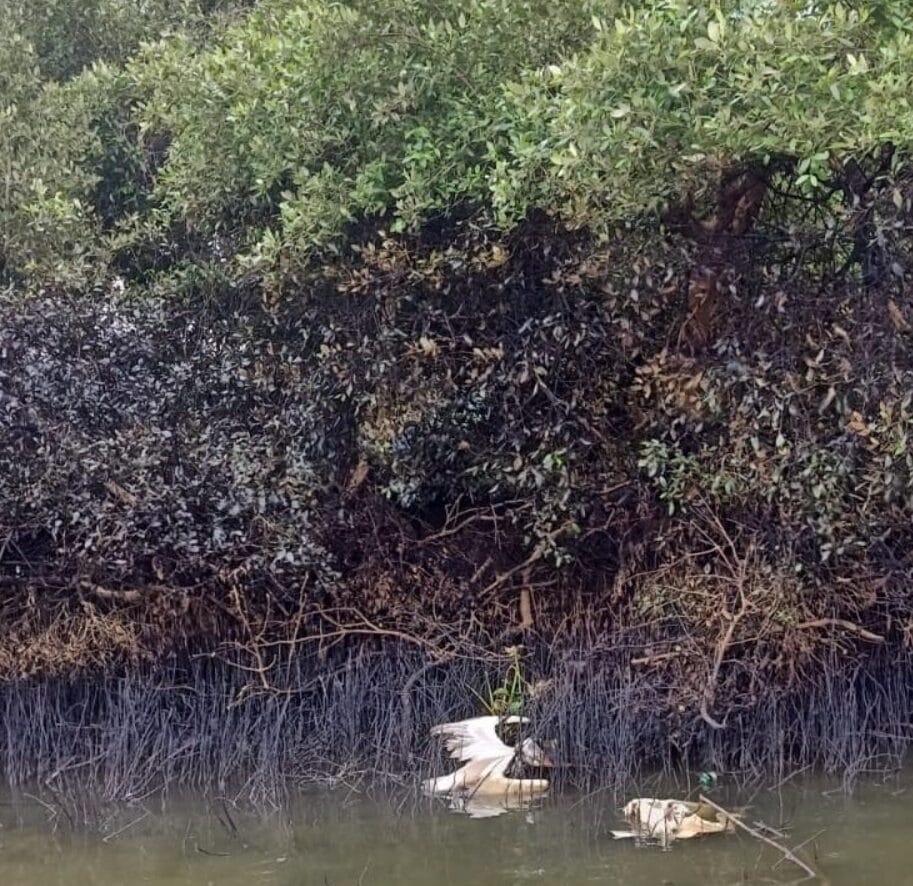
He further explains, “The black oil deposited on the trunk and leaves of mangroves in the estuary is particularly concerning. These mangroves (mostly belonging to Avicennia genus) have special breathing roots that emerge from the water. If their roots are coated with oil, it hinders respiration, ultimately leading to the death of the plants.”
Posting on X (formerly known as Twitter) about the mangrove clean-up updates on December 23, 2023, Supriya Sahu states, “Low-speed sea water jet pipes will clean oil deposits, which will be absorbed using soak pads, skimmers, and oil booms and safely disposed of. It’s a slow and laborious process to clean about 60 hectares of mangroves.”
For Kumar and his fellow fishermen however, the sole concern is about when they can set sail into the sea for a bountiful catch to sustain their families. None of the officials have a clear answer to this question at the moment.
[This story was first published on Mongabay. It has been republished with permission. The original article can be found here.]